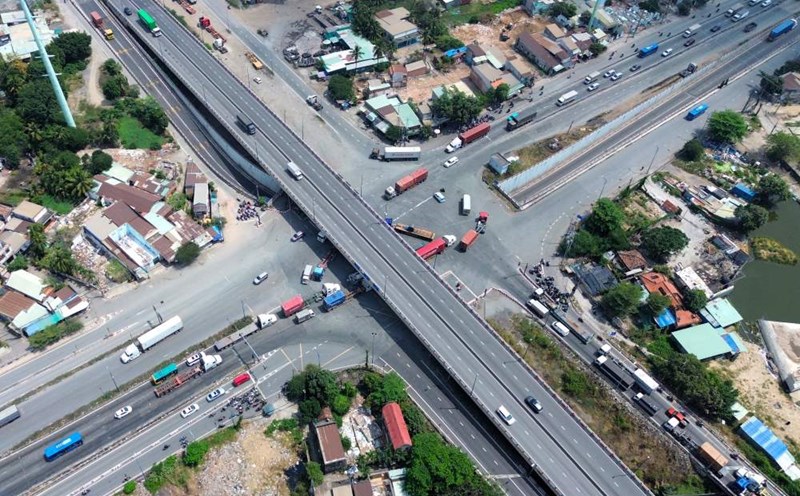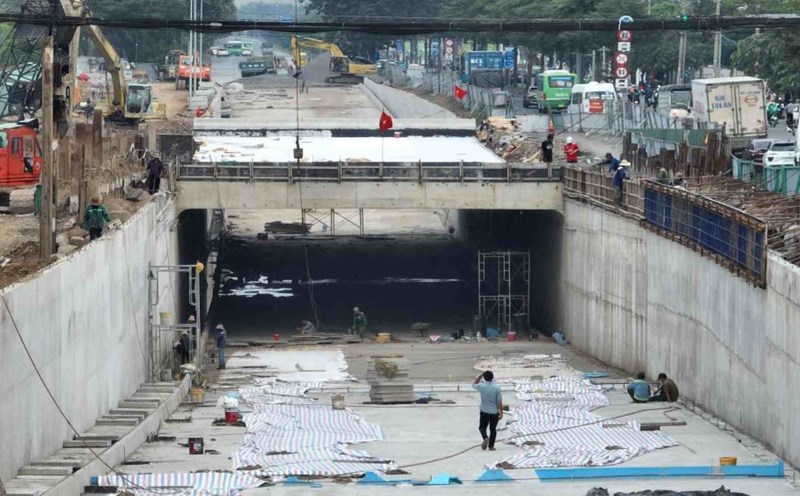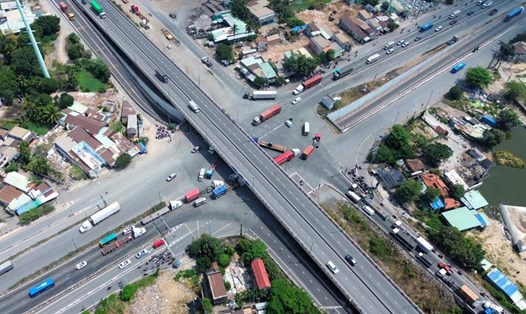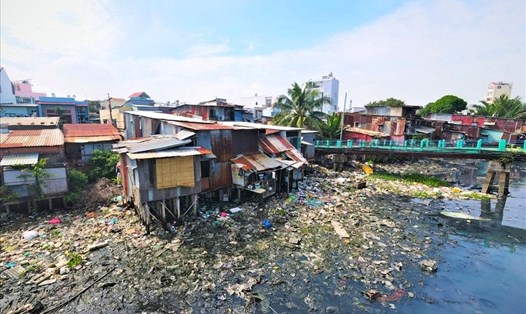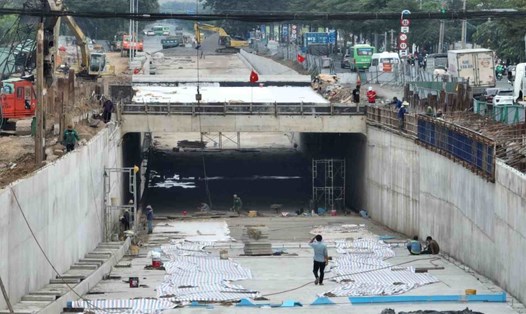This information is stated in the report of the Department of Natural Resources and Environment of Ho Chi Minh City sent to the People's Committee of Ho Chi Minh City on the progress of compensation payment and site handover for projects in 2024 in districts, towns and Thu Duc City.
As of January 31, 2025, the total compensation capital disbursed to 161 projects in 17 districts, towns and Thu Duc City is VND34,529 billion (reaching 98.44%) over VND35,076 billion in compensation capital in 2024.
Of which, District 11 and Binh Thanh District achieved a disbursement rate of 100%. Many other localities also have a high rate of over 98%, such as District 8 (99.98%), Go Vap District (99.79%), District 10 (99.56%), Nha Be District (99.36%), Binh Tan District (99%), Cu Chi District (98.96%), Thu Duc City (98.97%) and Hoc Mon District (98.19%).
However, despite the high disbursement rate, the actual payment progress for the people is still very slow. As of February 26, 2025, the total amount paid has only reached VND 7,069 billion, accounting for 20.47% of the total plan.
In particular, some districts and towns have very low payment rates, such as District 3 has not yet paid (00%)), Can Gio district has only reached 1.78%, District 8 has reached 2.84%, District 4 has reached 3.41% and Binh Thanh district has reached 7.06%.
According to the Department of Natural Resources and Environment, the amount of VND34,529 billion disbursed is actually the capital issued from the State Treasury.
According to the process, after the People's Committees of localities complete the approval of compensation, support and resettlement policies and plans for each project, the Investors and the State Treasury of Ho Chi Minh City will base on this decision to transfer money to the Compensation and Site Clearance Boards in districts, towns and Thu Duc City. These boards are responsible for making payments to the people.
Therefore, in terms of procedures, when the amount is disbursed from the State Treasury, the compensation capital is considered to have been disbursed.
According to the Department of Natural Resources and Environment of Ho Chi Minh City, one of the main reasons for the slow progress of compensation disbursement is the inaccurate budget making.
Due to the lack of a legal basis to inventory the current situation, local authorities can only estimate based on cadastral records. This leads to the temporary calculation of the entire recovered land as legal. When implemented in practice, the payment amount is often lower than the estimate, reducing the disbursement rate.
On the contrary, some projects have incurred higher compensation costs than expected, forcing them to adjust investment policies, prolonging implementation time. The delay also leads to "priced inflation", causing total investment to increase, making it more difficult to disburse.
Many projects do not follow the planning, and are forced to adjust after approval. Some cases of land recovery are not in accordance with the boundary or are not in sync with related projects, causing people to be affected many times, making it difficult to stabilize their lives and not agreeing with compensation policies. This causes difficulties in handing over the site and raising capital when land prices increase.
The People's Committees of localities have not closely coordinated with the Department of Construction in forecasting demand, leading to a shortage of resettlement housing funds. The delay in approving the land price adjustment coefficient has caused disagreement among people, prolonging the disbursement time.
There is a shortage of personnel participating in compensation work, leading to delays in handling documents. Some local leaders hesitate to verify the origin of the land, causing the compensation plan to be delayed in approval.

